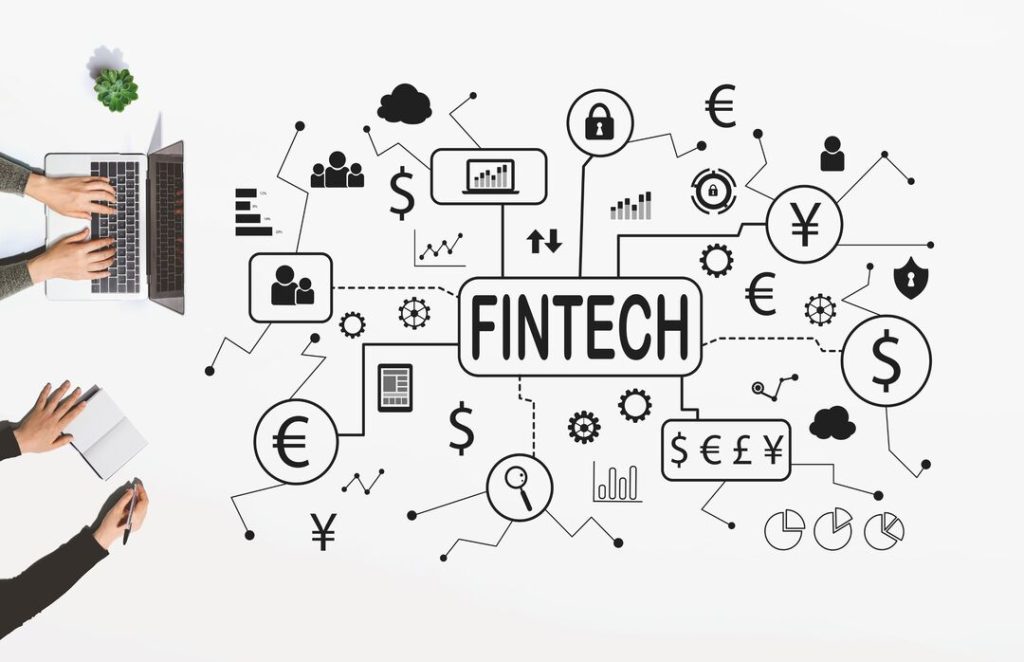The rise of fintech companies in the US has transformed the way individuals manage their personal finances. Fintech, short for financial technology, encompasses a variety of firms leveraging technology to enhance financial services. As these companies proliferate, they are playing a crucial role in helping consumers better understand and control their financial well-being.
Anúncios
With innovative tools and platforms, fintech is reshaping how people engage with their finances, from budgeting and saving to investing. In this blog post, we’ll explore the expansive growth of fintech in the US and its impact on personal financial management.
The rise of fintech in America

Over the years, fintech has grown from a niche market into a significant force within the American financial landscape. The sector’s extraordinary rise can be attributed to numerous factors, including increased mobile connectivity, digital literacy, and consumer demand for user-friendly financial services. These elements collectively pushed the boundaries of traditional banking, creating a fertile ground for fintech enterprises to thrive.
The deregulation of financial services has also fueled the ascent of fintech in the US. By lowering barriers to entry, fintech companies have been able to innovate without the heavy constraints typically associated with traditional banking. This flexibility has attracted billions in venture capital investment, further accelerating their growth.
Innovative tools and platforms
Fintech companies are renowned for offering groundbreaking tools that simplify financial tasks. These platforms often provide a more seamless experience compared to traditional banking services, integrating user-centric features to manage money effectively. Budgeting apps, robo-advisors, and peer-to-peer payment systems illustrate the breadth of solutions that fintech has introduced to enhance personal finance management.
Budgeting apps are one of the most popular offerings from fintech companies. These applications enable users to track expenses, set savings goals, and monitor spending habits in real-time. By presenting financial data in easily digestible formats, they empower consumers to make informed decisions about their finances, promoting smarter spending and saving patterns.
Peer-to-peer and digital payments
Peer-to-peer (P2P) payment platforms have revolutionized the way money is exchanged between individuals. Companies such as PayPal, Venmo, and Cash App facilitate easy and fast transactions with just a few taps on a smartphone.
This convenience has heightened consumer expectations, prompting banks to integrate similar technologies to remain competitive. Digital payment methods are not limited to P2P solutions. Fintech has facilitated the widespread adoption of contactless payments, mobile wallets, and cryptocurrency transactions.
These advancements have met the growing demand for cashless payment options, which have become increasingly prevalent in the wake of the COVID-19 pandemic. As consumers continue to embrace digital solutions, fintech’s role in shaping the future of payments becomes ever more pronounced.
Impact on consumer financial behavior
The proliferation of fintech solutions has led to significant changes in consumer financial behavior. By offering innovative tools and services, these companies have provided consumers with greater control over their financial lives, leading to more informed decisions.
The simplification of previously complex financial processes encourages user engagement and active participation in personal finance management. Fintech empowers consumers to take initiative in areas such as saving, investing, and credit management.
The ease of access and wealth of information available at their fingertips mean that more people are taking charge of their financial futures. This democratization of financial knowledge is closing the gap between traditional financial literacy and digital awareness.
Financial inclusion and accessibility
One of the most profound impacts fintech has had is in the realm of financial inclusion. By breaking down barriers, these companies are bringing financial services to populations that have historically been underserved. Through mobile technology, fintech firms are enabling people in remote and rural areas to participate in the financial system.
This increased accessibility is not only limited to geographic inclusion. Fintech platforms are also targeting segments of the population who struggle with challenging credit histories or lack traditional financial resources. By utilizing alternative data for credit scoring, fintech companies are providing new opportunities for these individuals to access loans and other financial services.
The future of personal finance management
Looking ahead, the impact of fintech on personal finance management in the US is poised to grow even further. As technology continues to evolve, so too will the ways in which individuals can manage their money. Virtual reality, biometric security features, and advanced machine learning algorithms are just a few examples of technologies that could shape the future of fintech.
Moreover, as regulatory environments continue to adapt, the collaboration between fintech companies and traditional financial institutions may lead to more comprehensive and integrated services. This synergy has the potential to enhance customer experiences, offering seamless solutions across various financial needs.






